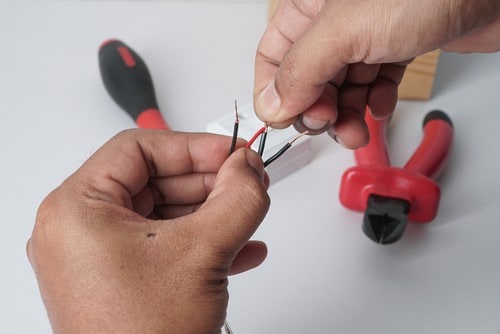
Splicing refers to joining two fiber optic cables together. It’s designed to restore fiber optic cables in case they’re broken. Splicing is especially useful in the field, as it is a faster and more efficient method used to restore fiber optic cables when buried cables become damaged or when an available fiber cable is not long enough for the required run. Fiber optic splicing is used primarily in telecommunications, LAN and networking projects.
Termination or connectorization is another widely used method of joining fibers together.
Mechanical vs Fusion Splicing
Mechanical and fusion are two different methods of splicing. When compared to fiber connectors, both of these methods provide a lower insertion loss.
Mechanical Splicing
A mechanical splice is essentially a junction of at least two optical fibers. The fibers are aligned and held in place by an assembly that is self-contained (using an index matching fluid). The use of connectors to link fibers is a good example of this method. Mechanical splicing is used when you need to make splices quickly and easily, like during temporary restoration or splicing multimode fibers. Mechanical splices can be permanent or reenterable and are available for single-mode or multimode fibers. A mechanical splice requires four basic steps:
1. Stripping the fiber
The first step is to remove the protective coatings, tubes, jackets, and strength members so that bare, clean fiber is visible.
2. Cleaving the fiber
Next, it’s time to cleave the fiber. Getting a good cut at the right angles to the axis is necessary.
3. Joining the fiber mechanically
Now the fiber ends can simply be connected together inside a mechanical splice unit (no heat necessary). The index matching gel helps couple the light from one fiber end to the other.
4. Protecting the fiber
Once the fibers are splices, they should be put in a splice tray and then a splice closure. To prevent moisture damage, the tubing is sealed and shrunk.
Fusion Splicing
Although fusion splicing is more expensive than mechanical splicing, it typically lasts much longer. This method fuses fiber optic cable cores together with less attenuation. How does it work? A specialized fusion splicer machine aligns two fiber ends precisely. Next, the glass ends are melted and fused, or welded, together using heat (like an electric arc.) This allows for a transparent and continuous connection between the fibers and limits loss of light transmission.
Fusion splicing can be used for both single-mode and multimode fiber optic cables. It also allows for mixing different types of fiber cables. Fusion splicing is often used in joining cables in long cable runs (when more than one cable is needed for the length of the run). It is the most popular method of fiber optic cable splicing due to its many advantages, such as less reflectance, strength, reliability and lower loss.
There are four steps to fusion splicing:
1. Stripping the fiber
Both ends of the fiber optic cable are being prepared to be fused. Protective coating, jackets, tubes, strength members are all stripped off to leave the fiber bare and clean.
2. Cleaving the fiber
The importance of a good fiber cleaver cannot be overemphasized for a successful fusion splice. Cleaver nicks the fiber, then pulls/flexes it so as to cause a clean break rather than cut the fiber. Note that the cleaved end-face should be flat and perpendicular to the axis.
3. Fusing the fiber
When fusing the fiber, remember about aligning and melting. The ends of the fiber should be well aligned within the fiber optic splicer. Next, use an electric arc to melt the fibers and permanently weld two fiber ends together.
4. Protecting the fiber
A common fusion splice is rather strong and does not easily break during normal handling. Nevertheless, it should still be protected from bending and pulling forces. To keep the splice from breaking, we recommend using heat shrink tubing, silicone gel and mechanical crimp protectors.
The better method
Both methods of fiber optic splicing, namely mechanical and fusion, come with a list of advantages. Which method to use really boils down to application.
Fusion splicing is more durable and limits loss in comparison to mechanical splicing. On the other hand, though, it requires the use of an expensive machine. Fusion splicing is often used for long, high data rate lines (that are unlikely to be changed).
Mechanical splicing works best when the splice needs to be done quickly and fusion splicing is not an option. It can be used in temporary situations.
No matter which method works for you in your particular situation, it’s important to be careful and follow the previously described steps. It’s also crucial to keep the tools clean.

Leave a Reply